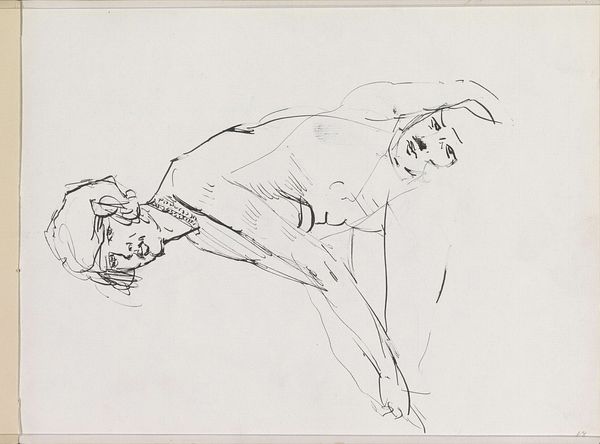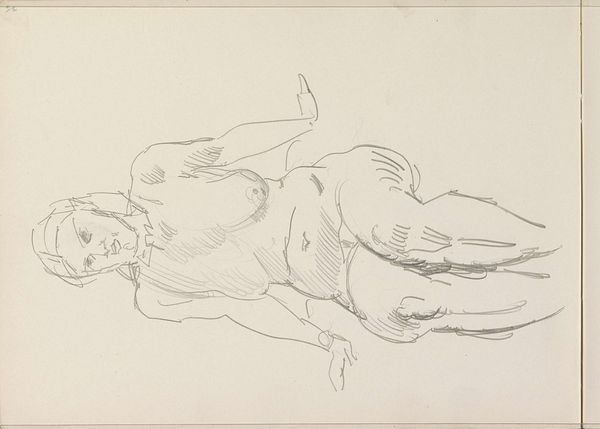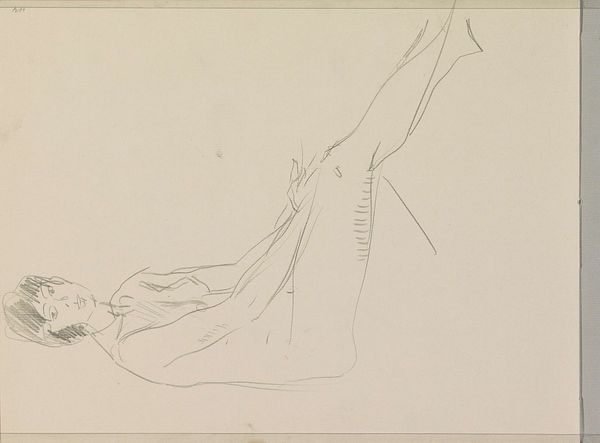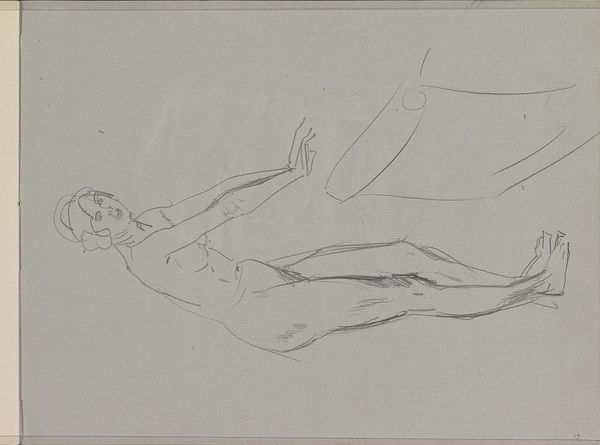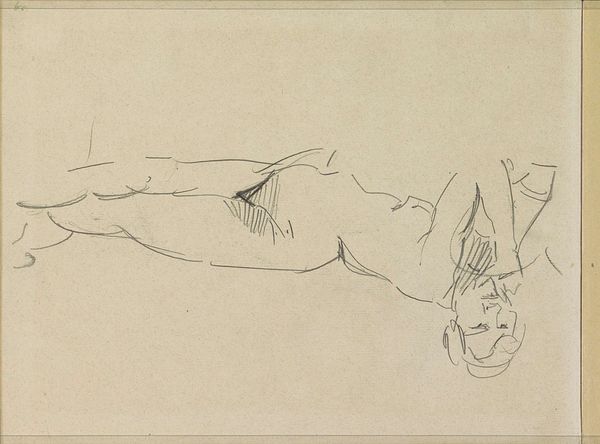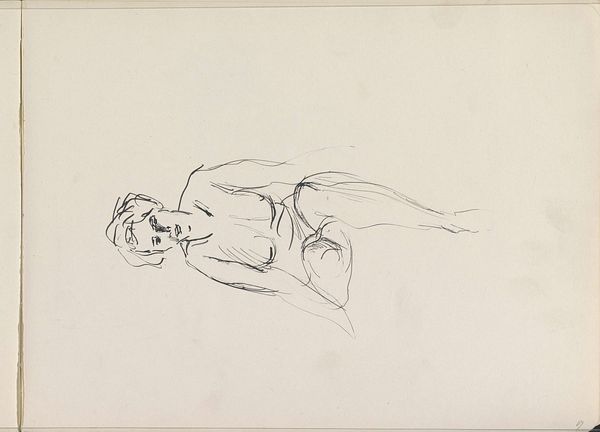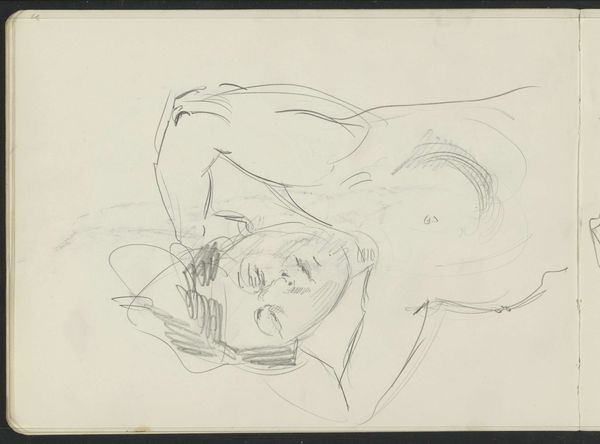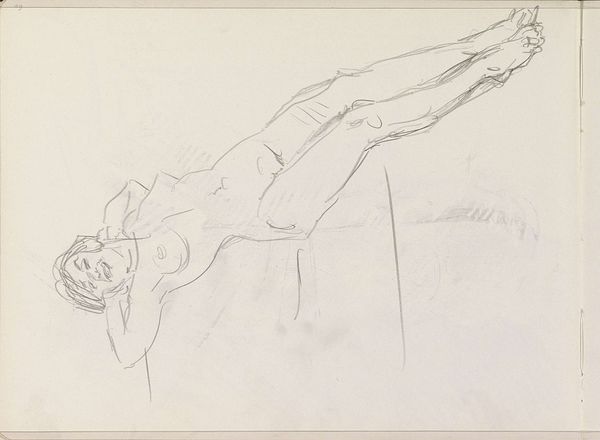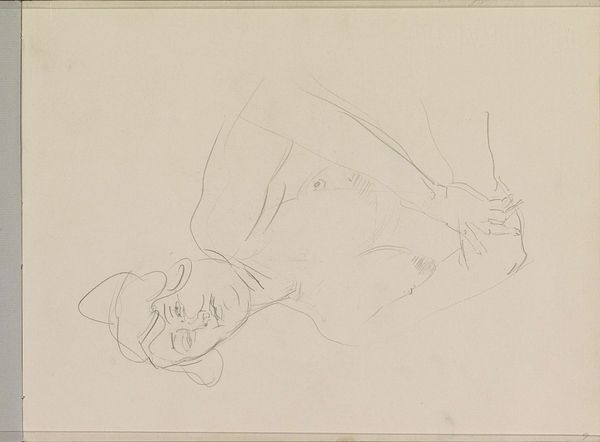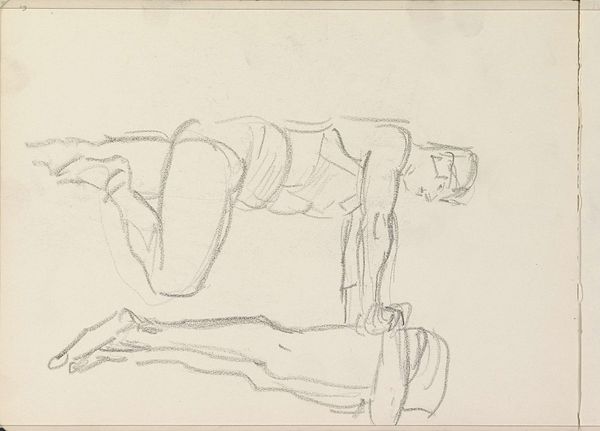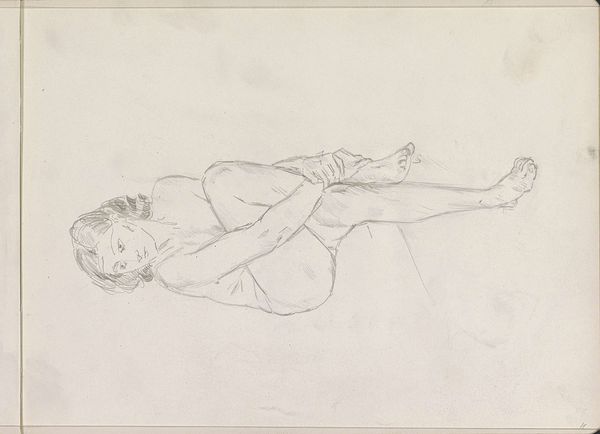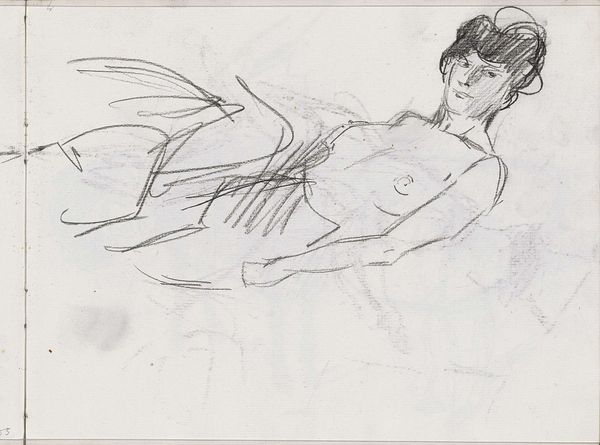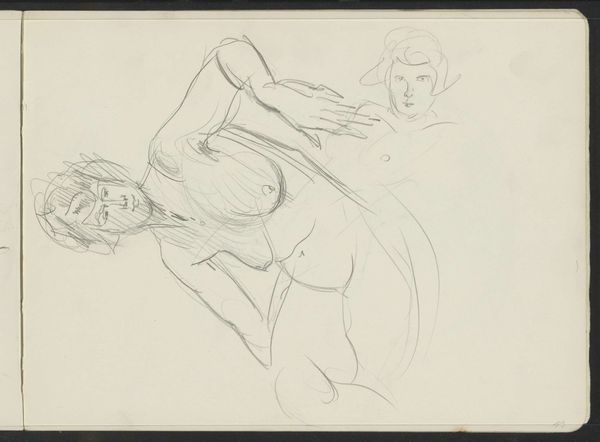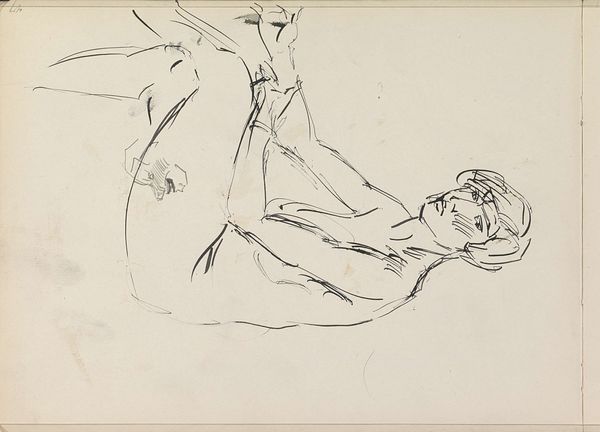
Copyright: Rijks Museum: Open Domain
Curator: Here we have Isaac Israels' "Reclining Female Nude," a drawing that was likely created sometime between 1875 and 1934. Editor: There's a wonderful immediacy to it. It feels like a captured moment, light and effortless. The pencil lines are so minimal, almost like a whisper on the paper. Curator: It certainly conveys intimacy. Israels' decision to depict a nude figure in a reclining position— a very common subject, to be fair—allowed him to explore the contours and nuances of the female form in a very direct way. Think about the role of the nude in art history. This wasn’t about idealizing the female form; it was more observational, almost detached. Editor: Agreed. It is less about idealization and more about the act of seeing and rendering. I find the incompleteness of the sketch fascinating. The sketchy lines, the unfinished areas…they emphasize the process of creation, don't they? Curator: Absolutely. Israels was a key figure in the Dutch Impressionist movement. This type of study drawing wasn’t intended for public display, or any display at all. This may have simply been Israels trying to improve his craft, or even simply to explore. Consider how different this drawing would be perceived if it was intended for exhibition. Editor: The composition guides the eye beautifully, even with such minimal means. Look at how the lines define the pose, the subtle shading suggesting volume and depth, the tilt of her head adding vulnerability and human interest. Curator: But one could argue that the perceived 'vulnerability' may simply be because of its association with intimacy and candidness rather than an actual element of the woman's mood or being. The reception of such imagery changed vastly from the late 19th to the early 20th century, impacting Israels and other artists' works. Editor: Very true. Regardless, it's hard to dismiss the elegance and sensitivity captured with such few lines. It prompts you to fill in the blanks, imagine the setting, her story. Curator: Exactly! It serves as a brilliant reminder of the subjective role the audience plays in interpreting the artwork, then and now. Editor: It has been a great pleasure viewing and sharing my thoughts on the formal elements with you today! Curator: The pleasure was all mine. Thank you for offering such acute observations on this understated drawing.
Comments
No comments
Be the first to comment and join the conversation on the ultimate creative platform.
